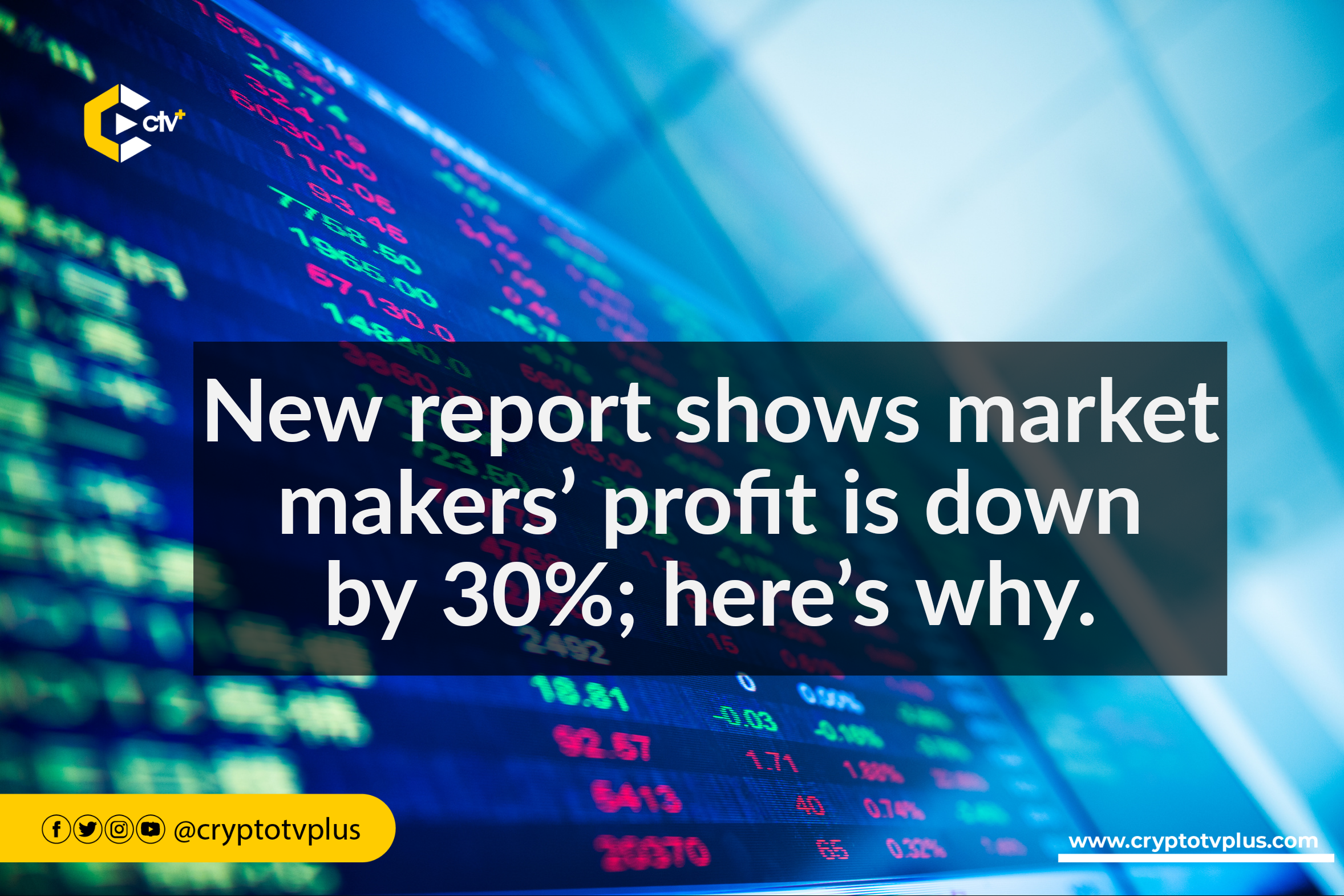News
New report shows market makers profit is down by 30%; here’s why

According to a Bloomberg report, the market-making sector in the crypto industry has seen a decline in profit by 30%.
This has been the result of the negative impact that has spread from the collapse of firms such as FTX last year and the rift between the industry and regulators.
Market making in crypto refers to the practice of providing liquidity to cryptocurrency markets by simultaneously offering to buy and sell a particular cryptocurrency.
Market makers are typically individuals or firms that specialize in facilitating trading by providing continuous buy and sell orders at different prices.
Bloomberg also highlighted another impact of the FTX crash, which is the presence of several crypto tokens on exchanges without liquidity. These tokens are no longer attractive for traders to engage in compared with Q3 2021 through Q2 2022.
Diversification as a solution and its effect
Stating examples of market-makers and the strategies they are deploying in the current situation, the Bloomberg report noted that prominent liquidity providers such as Auros, GSR Markets Ltd., and Wintermute Trading Ltd. have sorted out a way to avert the market effect on their operations.
The first mentioned strategy is diversifying assets across various crypto exchanges in the industry.
Another step they are taking is storing digital asset inventories off trading venues, using them as collateral to borrow tokens for deployment on crypto platforms.
While this proves to make a way for the market-makers, there is a drawback. For the market-making sector as a whole, employing intermediaries results in a 20%-30% decrease in profitability compared to directly depositing and leveraging coins with a trading site.
Using off-exchange custody providers enhances security but also impacts the profitability market makers’ operations and limits leverage potential. These custody providers often impose fees on the services they offer to the market makers.
Speaking about the situation, Le Shi, Head of Trading at Auros, acknowledges the industry’s evolving perspective, stating, “The FTX debacle was a wake-up call for the industry.
Risks stemming from leaving assets on exchanges weren’t always prioritized, but that’s changed, and we understand that a higher cost is going to be a way of doing business now.”
Another leader in the industry, Meng Hwee Neo, Managing Director of Trading and Singapore Co-head at GSR Markets, noted that market makers are looking to reduce their exposure to centralized exchanges to minimize risks.
GSR Markets is now focusing more on Bitcoin and Ether, the two largest tokens, as part of a “flight to quality” strategy, even if it comes at a cost to profit margins.
Will ETFs make a way?
Bloomberg also added that the hope among liquidity providers is that investors will return to digital assets, ushering in a new era of prosperity in the crypto market.
But, “without the influx of new sources of flow into crypto, it will be difficult to expect a new crypto summer anytime soon,” Meng Hwee Neo said
An overlook of the market especially from the US shows that one major way for more liquidity to enter the market is via the spot Bitcoin and Ether ETFs. The SEC despite the reapplication done by the ETF applicants has not approved any.
The question that remains to be answered is whether the SEC will approve these ETFs before the US election? Apart from the ETFs, what other ways can liquidity speedily come into the market again?
Read also; Cronos Labs reopens $100M accelerator for blockchain startups
























